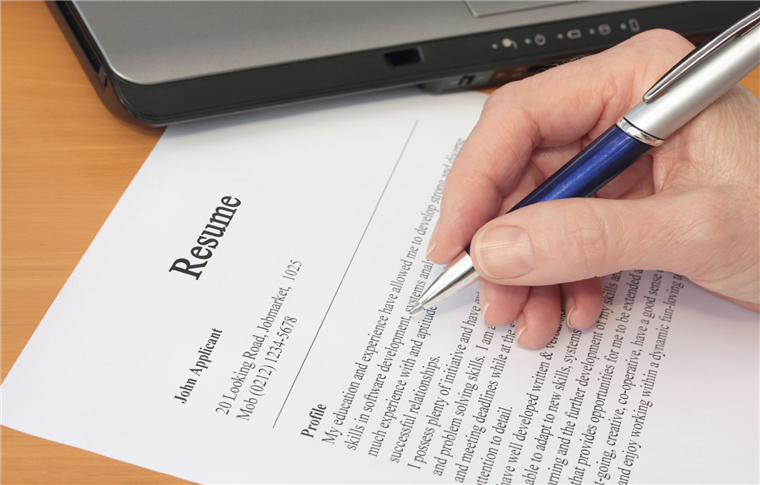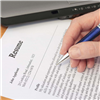You only have one chance to make a first impression, so after writing and revising your resume, don’t forget the final step: careful proofreading.
Proofreading Tips That Will Improve Your Resume
Prepare for proofreading
-
Proofreading requires time and concentration; set aside at least an hour to complete your review and find a quiet place without distraction.
-
Find a time to edit when you are refreshed, like after a good night’s sleep. You’ll also want to edit after you’ve had some distance from your resume, so if you write at the end of the day, proofread in the morning if you can.
-
Use the “spell check” feature of the writing software you’re using but don’t depend on it. While it will catch most spelling mistakes, it won’t always pick up on grammatical mistakes or if you use the wrong word.
-
Before you begin proofreading, make sure you’ve chosen a clear and readable font. Calibri, Cambria, Garamond and Helvetica are several safe and stylish options. Do not use overly stylized fonts like Comic Sans, Brush Script or Papyrus.
Proofreading process
-
Proofread your resume using a printed copy rather than relying on a screen. Our brains don't read words on computers, cell phones, or other screens as deeply or with as much detail. Black ink can be easy to miss, so use a colored pen in order to see your marked changes easily.
-
Using your finger as a pointer, read one word at a time. While not as slow as it sounds, this tactic provides a more thoughtful approach to reading.
-
Use a ruler, index card, or blank sheet of paper to cover the material you haven’t yet proofed, allowing you to focus solely on the line you are reading.
-
Read your resume silently and slowly. Every word.
-
Read your resume aloud. You might feel a little silly at first, but reading every word out loud calls attention to awkward phrases and misspellings. If you stumble over your words as you speak them, your reader will stumble as well.
-
Beginning at the end of your resume, follow every line backward (from right to left) and focus on just the spelling.
-
Print out your resume in a different font. If you’re accustomed to Calibri, try a serif font like Times New Roman while proofreading. Even this slight change can help you catch errors that were once invisible. (Pro tip: make a copy of the file and change the font in the second file so you don’t undo any formatting of the original.)
-
Make a list of any recurring mistakes you find as you proofread and, when you return to your document to make final corrections, be sure you’ve caught them all by using the “Find” function on your computer (Ctrl+F for PCs, Command+F for Macs).
-
Double check little words: or and of and it and is often get interchanged.
-
Be careful with contractions and the possessive tense. People often confuse there, their and they’re, you’re and your, its and it’s, etc.
-
Check your verb tense. For jobs you have left, use the past tense (e.g. “Organized team-building events”). For the job you’re currently in, use the present tense (e.g. “Report on program results to senior management”). Be sure that you use the same tense for each bullet point under a given job.
-
Focus on the little things. Review your consistency with standards such as capitalization, punctuation, spacing, and bullets. For example, did you end each line with a period or not? The important thing is to pick one way of doing it and being consistent.
-
Verify word choices, especially if meanings are ambiguous or if you are using business jargon. Dictionary.com and Thesaurus.com are powerful online resources to help you clarify meaning and replace passive verbs with active ones to invigorate your resume. Never use words you don’t clearly understand.
-
Click any active hyperlinks (e.g., email, articles, etc.) you have embedded in your resume contact information or cover letter to ensure they reach their correct destination.
-
Homophones are words that sound the same but are spelled differently and have different meanings. Watch out for these. Confusing accept and except or role and roll not only drastically affect the meaning of a sentence, but such mistakes will affect your reputation as well. Speaking of that, don’t confuse affect and effect either.
-
While it is sometimes difficult to avoid, take care not to overuse business jargon (other than keywords) and remove passive voice whenever possible.
-
Double check proper names, your contact information, and headings. This information is easy to overlook so make a point of going back to it.
-
Don’t expect to catch every error at once. Proof for spelling errors in the first round, verb tense consistency in the second, font sizes and spacing in round three, etc.
Partner with a friend
-
Ask a friend, family member or mentor to proofread your resume as a favor. Another person will be more objective in evaluating whether your resume makes sense.
-
Try tandem reading. Print two copies of your resume, give one to a friend, and take turns reading it aloud. As one of you reads, the other follows along and notes errors and awkward phrasing.
-
If you change phrasing or formatting in your resume as a result of your proofreading, go back and double-check those sections. These changes can introduce errors we don’t notice, so be sure to diligently re-proofread any sentences or paragraphs you’ve modified.
Source: www.indeed.com




